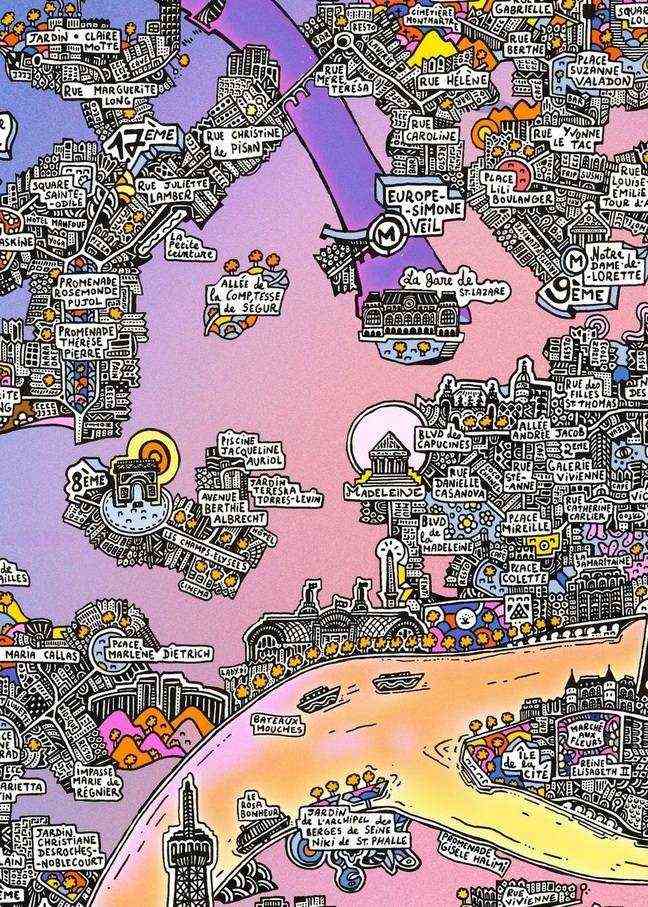Twelve percent of streets have a feminine name in Paris, what does that represent concretely? From this questioning, Alexis Carlier aka
Alcatela set up the project to create a map that illustrates the invisibility of women in the Parisian public space. Particularly committed, the designer will pay 16.8% of each sale to the
Women’s house, located in Saint-Denis. A symbolic percentage that refers to the
pay gap between men and women.
What is your “feminine Paris” card?
Today, in Paris, there are only 12% of the streets that bear the names of women, against 66% with the names of men. I drew my map to say, “This is what such a gap actually looks like. I really see it as a photograph of the place of women in public space in October 2021. We can see what has been done over the past 300 years. This map allows us to see where we are and what remains to be done. It is not a crime to say that we can go back and fix inequalities. With this project, I would like to bring out the debate among people who are not aware of this issue and who will buy the card just because they will appreciate the colors.
How did you come up with the idea for this card?
In 2019, the collective All of us stuck 140,000 false plaques displaying the names of women in the streets of Paris. Recently I moved to a street where one of these plaques is located. As we walked past with my roommate, we said to ourselves that it was a great project and we wondered what this actually represented 12% of streets with a woman name. From that moment, I decided to list all these streets, in a traditional and long way, to represent them on a map.

What does “feminine Paris” look like?
It has nothing to do with a classic map of Paris. In the “feminine Paris”, there are no big boulevards, only alleys, squares, or passages. At the time when the Grands Boulevards were created, there was no place for women in the public space. In this Paris, you can only cross the Seine in two places, with the Simone-Veil footbridge or the Marie bridge. And the left bank is inaccessible by car. The size of the districts is very unbalanced: in the 8th arrondissement, there are only two streets. In the 13th and 19th arrondissements, there are many more. It must be said that we find mainly female names in the streets created more recently. And then, in this feminine intramural Paris, there is only one metro station, the Simone-Veil station. [les stations Barbès-Rochechouart, Boucicaut ou Chardon-Lagache font référence au nom d’une femme et d’un homme]. There is now the Joséphine-Baker station in Gaîté.
Have you noticed an evolution in the representativeness of women?
Yes, I am not making this card to blame the City of Paris. On the contrary, in the last five years, the number of streets with names of women has doubled, it is considerable. The city is making a lot of efforts to put more and more of it, it has almost become systematic. We must still be careful not to fall into pinkwashing. I would like my project to follow this evolution. Already, people who know my job let me know when they learn about the creation of new street names. I will integrate them little by little. I would like this to become an interactive work.

